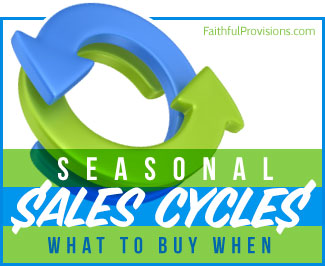 Welcome to my new series, Simply Saving — Never Pay Full Price Again. The goal of Simply Saving is, well, simple: give you tools so you NEVER PAY FULL PRICE AGAIN! Join us every week at Faithful Provisions for our Simply Saving tutorials and tips. I’ll cover topics like:
Welcome to my new series, Simply Saving — Never Pay Full Price Again. The goal of Simply Saving is, well, simple: give you tools so you NEVER PAY FULL PRICE AGAIN! Join us every week at Faithful Provisions for our Simply Saving tutorials and tips. I’ll cover topics like:
- Meal Planning tips
- Stocking Ahead – How to do it and when to stop!
- How to Read a Store Sales Ad
- Where to Get Coupons
- Playing the Drugstore Games
- Optimizing Your Freezer
- and more!
Coming next week….
Coupon Organization 101 (Part 1)
Join me as I walk through the two main ways to organize coupons, plus the advantages and disadvantages of each. Then we will walk through the multiple organization methods that are tried and true by veteran couponers.
========================================
Do you have a topic you would like covered in our Simply Saving series? Leave a comment and I’ll add it to the outline.




YAY! I’m always wanting to learn more about the coupon stuff. I’m single, so a lot of it doesn’t apply to me, but I’ve saved so much money since I’ve been using coupons.
Here’s a topic I would like to learn more about – a website I peruse stated that grocery store sales tend to go in “cycles” when the lowest price is available. I’d sure like to know how to take better advantage of that!
I like this one too! I’d love to be able to map out better according to store “cycles”. And how much you should by at these times to hold you over for the next time, for families of 2, 4, and so on.
Here’s the topic I would like to read about: shopping at Aldi’s or similar store that does not accept coupons. Also, how to shop at Sam’s Club.
Also, my mom lives in a retirement center. All of the residents have a fixed income and most also recieve food stamps. I have tried unsuccessfully to explain why they should follow the sales at CVS and WAGS, that they can purchase food items with their food stamps and get back Ecbs or RRs that can then be used for laundry detergent, toilet paper, etc. Could you explain in basic terms how to do this?